Guitar Pickups 101: The Home Musician’s Guide to Pickups
Let’s say you get together with a friend to jam on your electric guitars.
“Nice guitar!” they tell you. “What kind of pickups you got?”
…
And that’s when you realize you have no idea what pickups your guitar has. You don’t want to miss out on the control you could have over your guitar’s tone.
So we’re going to define guitar pickups and talk about how they work. Plus, how you can shape your guitar’s tone with them.
Contents
Get industry-quality every time (steal this framework)
I’m guessing you’re here because you want to make your mixes sound professional. Well, you don’t need expensive gear or software to do that – you just need the right knowledge.
We put together a brief training that covers a totally new approach to music production. Until now, everyone has been teaching production totally backward.
Just click below to watch.
But if you just want to learn about Guitar Pickups specifically, keep reading.
What’s a Guitar Pickup?

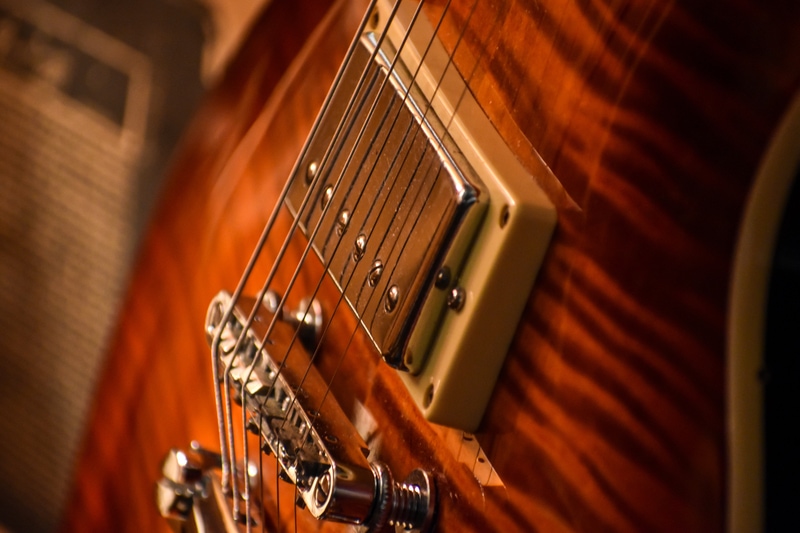
A guitar pickup is the device that takes the vibrations of your guitar strings and converts them into electrical signals. It’s the silver or black part that sits underneath your guitar strings.
These electrical signals then travel to a guitar amp and thus create the sound.
On its way to the amp, the signals are often colored by effects pedals or by the amp itself. Different pickups can even have different colors.
How Do Guitar Pickups Work?
Most guitar pickups (at least in electric guitars) use magnetism.
They use a magnet wrapped in copper wire, which creates a magnetic field. There’s a magnet (and a corresponding magnetic field) inside the pickup under each string.
Different pickups can sound different because these magnets are spaced and aligned differently. They may also vary in power.
Why Are Some Guitar Pickups Angled?
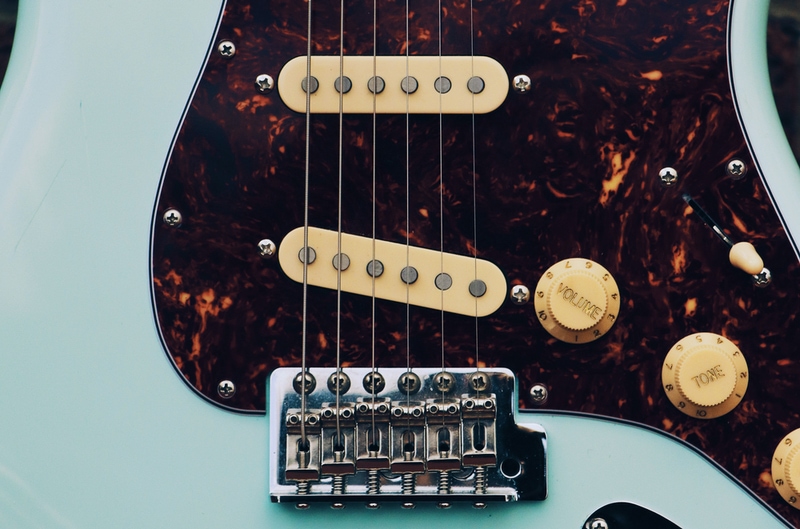
Ever notice how some guitar pickups are slightly angled while others aren’t? Well, there’s an interesting reason for that.
As I hinted above, guitar pickup position can change the tone of the guitar.
You can test this for yourself, either with your guitar and amp at home or by going to your local music shop.
When your guitar is plugged in, strum the strings closer to the bridge. Then strum the strings closer to where the neck and body meet.
Notice the difference in sound?
The pickups closer to the bridge will sound warmer. While the pickups closer to the neck will sound brighter.
So if you have an angled pickup, the point is for some of the strings to sound warmer and for some to sound brighter.
When you have a mix of warm and bright tones in a guitar pickup, that can create an overall better sound.
If all the strings were one or the other, it would either be too harsh or too muddy.
The Difference Between Active and Passive Guitar Pickups
All guitar pickups fall into two categories: active or passive.
Active guitar pickups require power—usually from a nine-volt battery—to get the full and powerful output you expect.
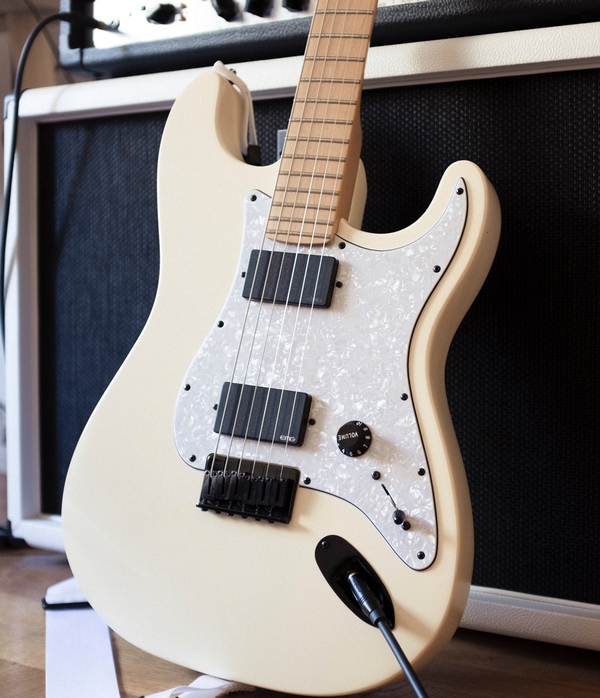
On the other hand, passive guitar pickups don’t need any external electricity to work. (Other than an amp so you can hear it.)
When do you need each type?
Most genres and guitar styles sound better with passive pickups.
If you’re playing music that needs much more power—like heavy metal or funk—it’s better to go with an active pickup.
Humbucker vs Single-Coil Pickups: Which Is Better?
The two main types of guitar pickups are humbucker and single-coil pickups. So how are they different?
Let’s start with single-coil guitar pickups.
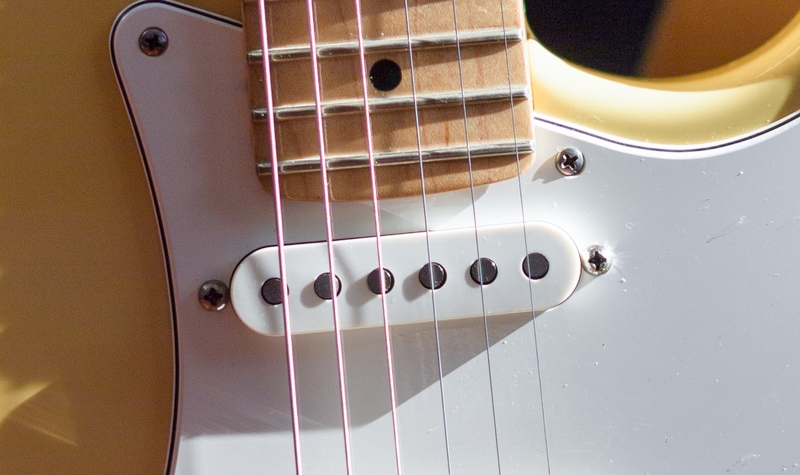
Single-coil pickups are the traditional type, which uses a single coil (surprise!) of wire wrapped around the internal magnet.
These are known for delivering a bright and treble-y tone that typically jumps out of a mix.
Single-coil pickups are common in classic rock, country, and some funk. But they work in pretty much any genre.
On the other hand, humbucker guitar pickups use two coils per pickup (i.e., double-coil pickups). Humbuckers also work in any genre, but they sound best in ones like heavy rock, funk or fusion, blues, and some jazz.
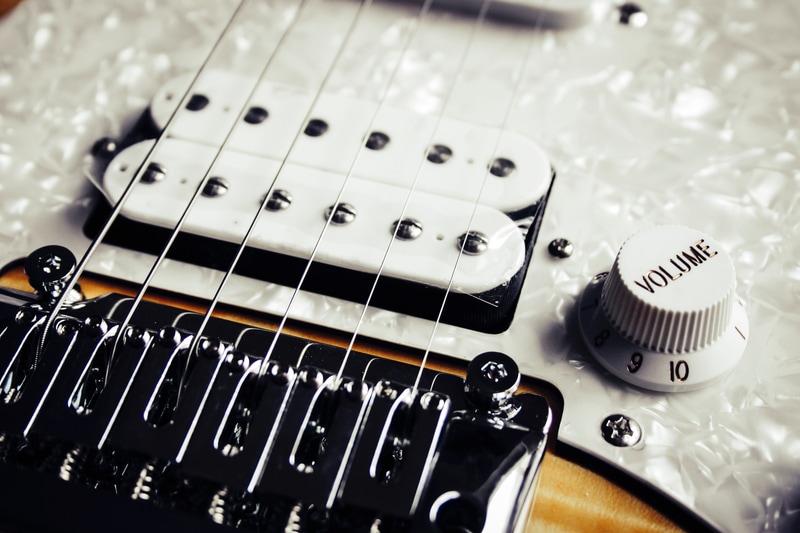
Because they have a double coil, they’re usually more powerful and louder.
But get this:
Many electric guitars (especially custom-built ones) have both single-coil and humbucker pickups. This allows the guitarist to change their guitar’s sound with ease.
Conclusion
If you knew little to nothing about guitar pickups before this guide, now you know what you should know.
You know how pickups affect the sound of your guitar and why.
So when someone wants to talk with you about guitar pickups, you can easily be a part of the conversation. And maybe you’ll teach others a thing or two.
Next Steps
If you want to dig deeper into music production and learn what it actually takes to make mixes that sound pro…
And you’re an intermediate or advanced producer…
Be sure to check out the free masterclass:
Enjoy!
![]()
![]()
Caleb J. Murphy is a singer-songwriter and music producer based in Austin, Tx. He’s also the founder of Musician With A Day Job, a blog that helps part-time musicians succeed.















![Toni Kroos là ai? [ sự thật về tiểu sử đầy đủ Toni Kroos ]](https://evbn.org/wp-content/uploads/New-Project-6635-1671934592.jpg)


